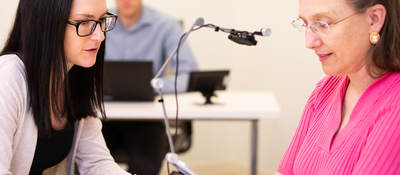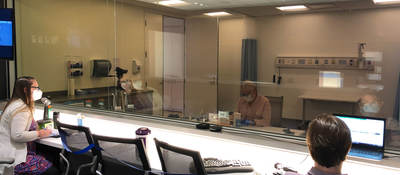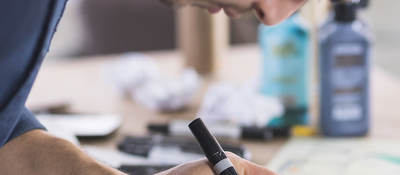August 7, 2020
As the COVID-19 pandemic continues, more and more individuals are getting tested for the virus. People are being tested before receiving certain medical treatments, and some undergo routine testing due to working with immunocompromised populations. Some might opt to get tested because they had known or suspected exposure to COVID-19, or perhaps simply to check that they are COVID-free ahead of reuniting with family members or “podding up” with close friends.
Rapid versus PCR tests
While COVID-19 testing started with nasopharyngeal swabs, it transitioned to nasal swabs when supplies began to run low. Nasal swabs remain the ubiquitous testing tool, regardless of whether someone is getting the point-of-care “rapid test,” which could produce results in as short as 10 to 15 minutes, or the “PCR” test, which is processed in a laboratory and may take many days to yield results due to backlogs. While the steps to collect a sample for the rapid and PCR tests might be the same, users need to identify the proper test kit and sample handling process to support an accurate test result. When I got tested before seeing at-risk relatives, I experienced a “close call” firsthand, wherein the nurse selected the rapid test kit rather than the PCR kit. The manager on-site had to clarify which kit resided where, and how to prepare the sample for analysis after the test. Having gone to a local urgent care clinic, I had wrongly assumed that all the staff would be well-versed in administering all COVID-19 tests, but I was wrong.
Researchers in industry and academia alike are racing to develop alternative, simplified testing approaches, leveraging FDA’s Emergency Use Authorization (EUA) pathway to get fast--albeit temporary--FDA approval. Saliva-based testing has emerged as a low-cost and less invasive option that can be self-administered at home, and several teams in the US and abroad are developing breathalyzer-type COVID-19 tests. These handheld breathalyzers should be inexpensive to manufacture and are expected to facilitate rapid (~15-second) health checks of large numbers of people--for example, individuals entering airports, sporting events and, naturally, schools.
The breathalyzer option
Breathalyzer devices will be relatively inexpensive and relatively simple to operate, and results can be displayed within 15 seconds. The good news--and, simultaneously, risky news--is that rapidly evolving testing technology and increased access to tests means testing will be performed by a much wider range of users. Whereas trained clinicians or technicians are currently administering, or at least overseeing, most tests, various laypeople will likely be stepping in to serve this role--for example, a hostess at a restaurant, transit worker at a subway station, or a school administrator.
These individuals will need to know how to administer or self-administer the test (i.e., collect some type of sample) and then interpret the results. When conducting usability tests of metered-dose inhalers, which appear quite simple, we routinely see people make critical use errors. For example, someone doesn’t inhale for long enough or hold his breath after inhaling.
The role of human factors research and design
Some rapid COVID-19 tests will receive FDA clearance or approval and get onto the US market via the EUA pathway without the test kit or device’s design, or its instructions, having benefitted from human factors research and design work, or perhaps even being touched by a representative end-user. While this might be considered a win for the companies marketing these tests, it could lead to products that seem safe, reliable, and easy to use, but fall short one or more of those claims.
Having kids take a breathalyzer test on their way into school may give parents a false sense of security that their kids are not being exposed to COVID-19. But, if the people administering the tests don’t understand the intended use – for example, that a child must inhale prior to exhaling forcefully into the device – the test might not detect the virus. Similarly, if the device indicates whether the sample suggests that virus was or was not detected, but does not indicate if there was an insufficient sample or another error, the tests will not maximally support efforts to avoid spread and exposure to the COVID-19 virus.
Conclusion
During development, companies are well-served to conduct usability testing to get an early sense of whether a COVID-19 testing product is usable and effective in the hands of end-users. If it’s not, the product and/or its labeling should be modified to help support proper use. Usability testing adds value to any product development effort. The activity becomes particularly important for safety-critical products that make their way into the hands of the general public and, in the case of COVID-19 tests, take a central role in helping us identify, trace, and combat the spread of this virus.
Allison Strochlic is Research Director at Emergo by UL's Human Factors Research & Design division.
Request more information from our specialist
Thanks for your interest in our products and services. Let's collect some information so we can connect you with the right person.







